Dark soy sauce is a versatile ingredient, commonly used to enhance the flavor and appearance of dishes. However, if you find yourself in a situation where you can't use it, there's no need to worry. Whether you're out of stock or have a soy allergy, there are several dark soy sauce substitutes available to provide a similar depth and complexity to your dish.
This sauce is a staple ingredient in many Asian cuisines and is known for its rich, savory taste and dark color. However, it’s not always easy to come by in stores, and some people may not be able to consume it due to dietary restrictions.
Fortunately, there are several substitutes for dark soy sauce to choose from. Each option has its own unique flavor and texture, so it's important to choose one based on the needs of your recipe.
This article explores several of the best dark soy sauce substitutes and when to use each one (and how much!). No matter what you're cooking - stir-fry, marinades, or dipping sauces - you can find a suitable replacement to enhance the flavor and add a splash of salty sweetness.
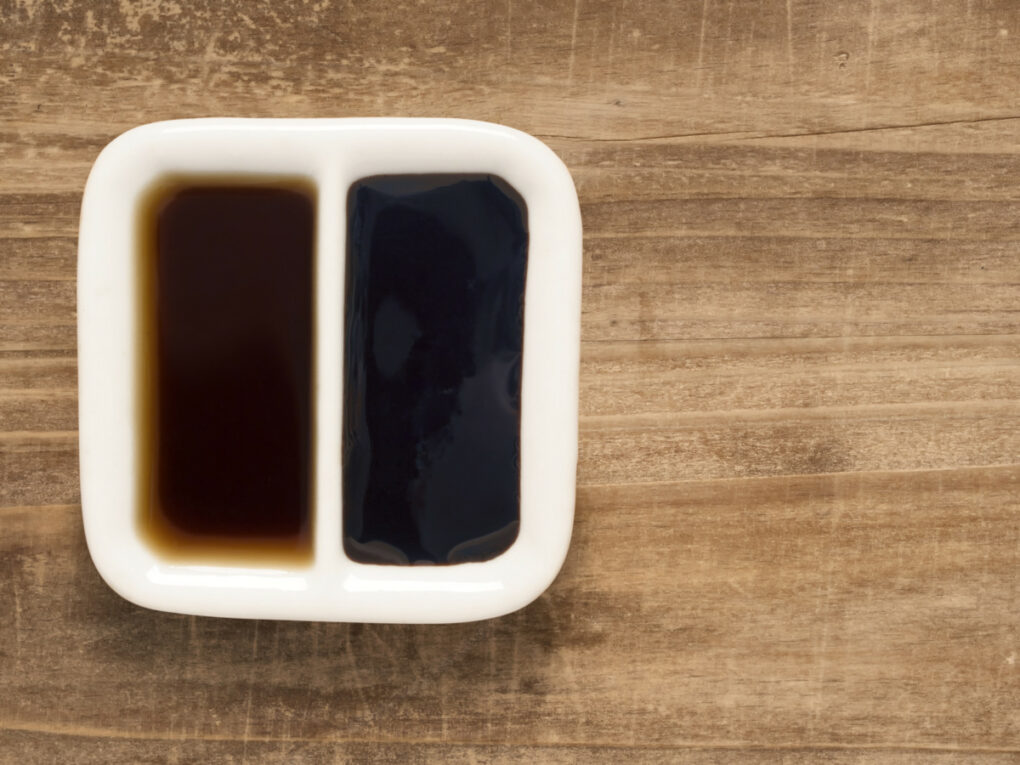
Jump To
What Is Dark Soy Sauce?
If you're a fan of Chinese, Thai, or Japanese cuisine, then you've probably come across dark soy sauce before. Its bold and rich flavor, along with its dark color, make dark soy sauce an essential sweet & savory component in several Asian dishes.
This sauce is made from soybeans, wheat, salt, and water. The sauce is left to ferment for several months, giving it a deep, complex flavor, then aged for several more months to deepen the color and add to the flavor.
Unlike regular soy sauce, dark soy sauce contains molasses or caramel, which gives it its dark color and sweet taste. It's also thicker and less salty than regular soy sauce, making it great for marinades, stews, and braises.
Dark soy sauce is a staple in many Asian kitchens, and it's used in a variety of dishes, including stir-fries, noodle dishes, and soups. It's also used as a dipping sauce for dumplings and accompanies other side dishes and meals.
If you're looking for a dark soy sauce substitute, there are several options available, including tamari, oyster sauce, and hoisin sauce. Each of these sauces has a unique flavor profile and works well in specific dishes, some in slightly different ratios.
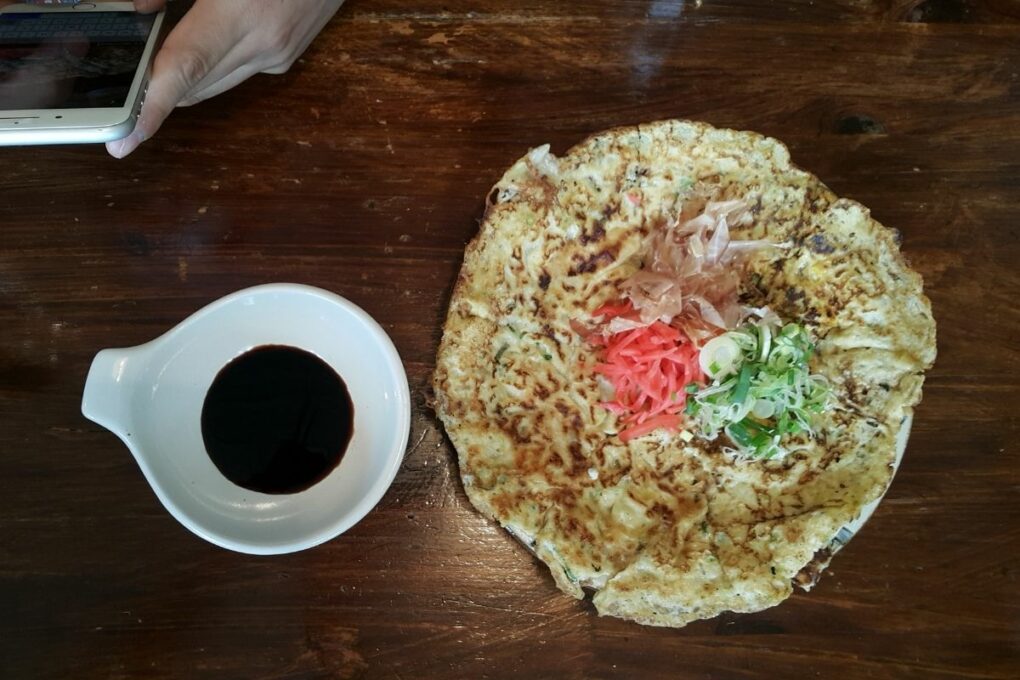
What Is Dark Soy Sauce Used For?
When it comes to Asian cooking, dark soy sauce is a crucial ingredient, particularly in Chinese cuisine. This thick, dark sauce is made from soybeans, wheat, salt, and occasionally caramel coloring, and it has a complex flavor that's both salty and slightly sweet.
Below are some of the most popular ways to use dark soy sauce in your cooking.
Marinades
A popular choice for meat, poultry, and seafood marinades is dark soy sauce, which serves as a base. Its deep color and flavor combine to impart a delicious, savory, umami taste to the meat.
Stir-Fries
Many stir-fry recipes incorporate dark soy sauce as a crucial component. It imparts depth and richness to the final dish and contributes to a glossy, caramelized finish on the ingredients.
Braising
To enhance the flavor profile and tenderness of meats and vegetables in braising liquids, dark soy sauce is frequently employed, adding a deep and savory taste to the dish.
Dipping sauce
Dark soy sauce can be used as a dipping sauce for dumplings, sushi, and other Asian appetizers. It’s also commonly used as a condiment for roasted meats and vegetables in a Korean BBQ .
Coloring
When it comes to adding depth and color to your dishes, dark soy sauce is a go-to ingredient in Chinese cuisine, often employed to darken the color of sauces, gravies, and soups.
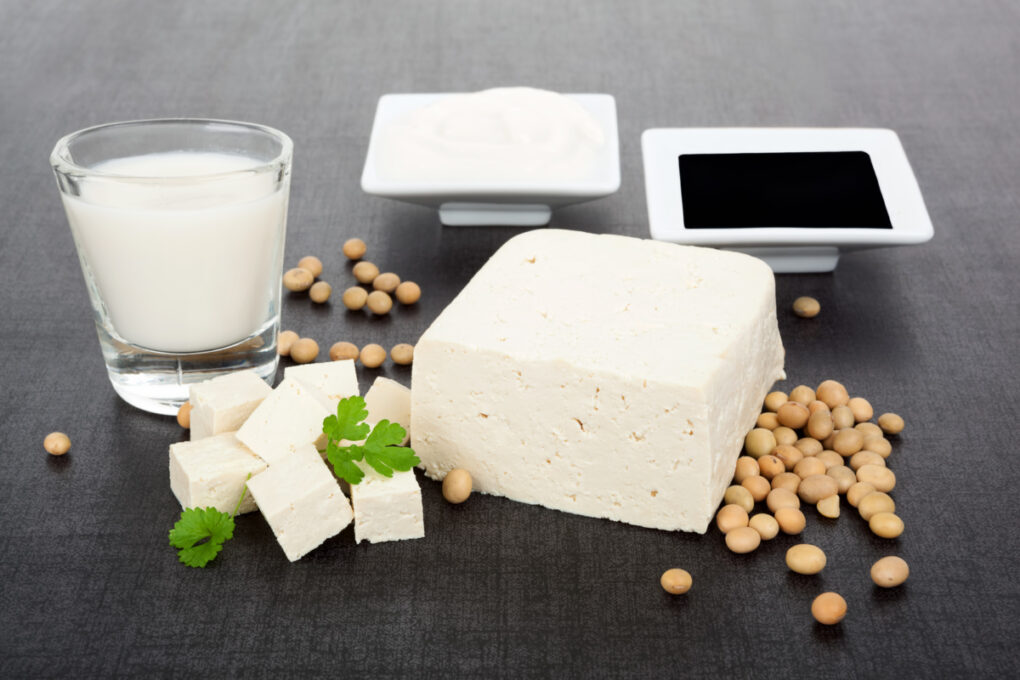
Cooking Ratio & Nutritional Value
Wondering about the cooking ratio and nutritional value of a dark soy sauce substitute? Here are some tips to help you choose the best one for your recipe.
Dark soy sauce is known for its unique flavor and color, but it is also high in sodium and may contain gluten. If you are watching your sodium intake or have a gluten allergy, you may want to consider a substitute that is lower in sodium or gluten-free.
| Substitute | Cooking Ratio | Nutritional Value |
| Tamari | 1:1 | Low in calories, high in protein and sodium, gluten-free |
| Maggi Seasoning Sauce | 1:1 | High in sodium, low in calories and protein (is essentially MSG) |
| Soy Sauce and Molasses | 1:1 | High in sodium and calories, low in protein |
| Soy Sauce and Balsamic Vinegar | 1:1 | Low in calories, high in sodium and iron |
| Regular Soy Sauce + Hoisin Sauce | 1:1 | High in sodium and calories, low in protein |
| Teriyaki Sauce | 1:1 | High in sodium and calories, low in protein |
| Oyster Sauce | 1:1 | High in sodium and calories, low in protein |
| Worcestershire Sauce | 1:1 | High in sodium and calories, low in protein |
As shown by the table, tamari sauce is the best option if you are looking for a low-sodium or gluten-free substitute for dark soy sauce.
Best Dark Soy Sauce Substitutes and When to Use Each
Tamari
Tamari is actually a great substitute for dark soy sauce that is traditionally made with little to no wheat, making it an excellent gluten-free option.
It has a rich and savory flavor that is similar to dark soy sauce, but it's usually less salty. This means that you may need to use a little more tamari than you would dark soy sauce in your recipes to get the same level of flavor.
Another thing to keep in mind is that tamari is not exactly the same as dark soy sauce, so it may not work well in every recipe. For example, if you're making a stir-fry and you want that glossy, caramelized look that dark soy sauce provides, tamari may not give you the same result.
Tamari is a great option if you're looking for a similar flavor profile. Just keep in mind that you may need to adjust the amount used to achieve the same level of flavor, and it may not work as effectively in every recipe.
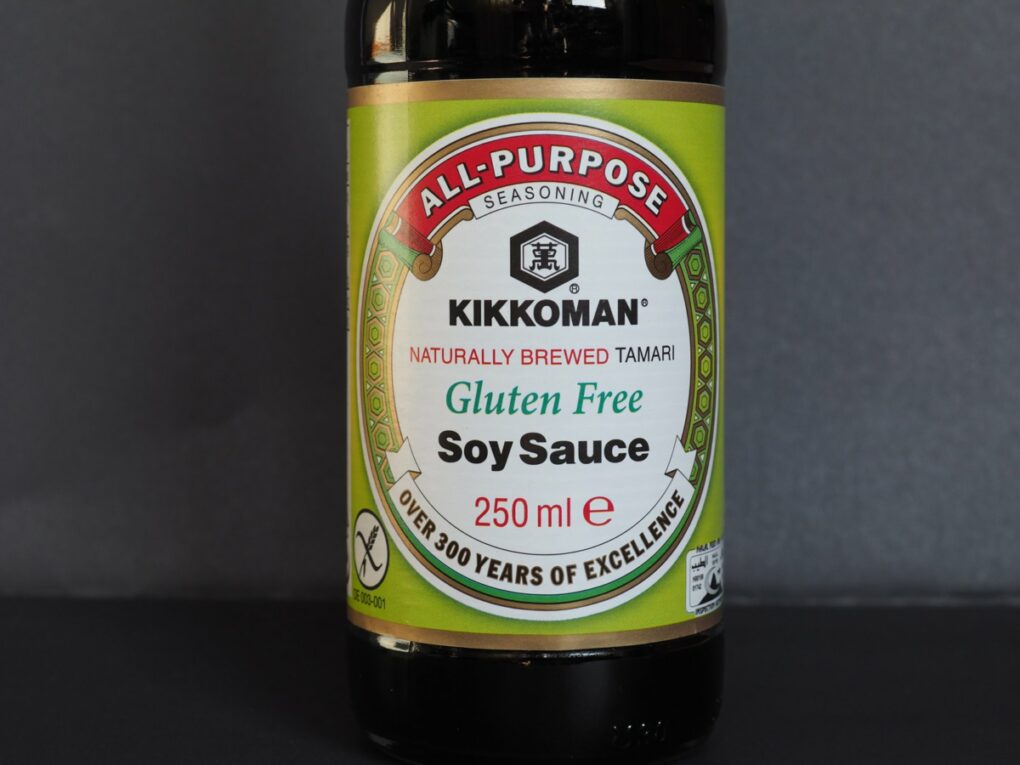
Maggi Seasoning Sauce
For those who want to switch up their recipe and try something new, Maggi seasoning sauce can be used as a substitute for dark soy sauce.
One of the main differences between Maggi seasoning sauce and dark soy sauce is that Maggie has a more intense, savory flavor. It's made with a blend of spices, herbs, and vegetables, plus MSG, giving it a unique taste that's different from traditional soy sauce.
When using Maggi seasoning sauce as a substitute for dark soy sauce, it's important to keep in mind that it's much saltier than soy sauce, and some people may be sensitive to MSG. Use it sparingly and adjust the amount to taste; you might have to adjust the other seasonings in your recipe to balance out the flavor.
Worcestershire Sauce
In some recipes, black soy sauce can be replaced with the tangy, savory sauce known as Worcestershire sauce. While it has a different flavor profile than soy sauce, it can add a similar depth of flavor to your dishes.
Worcestershire sauce is made from vinegar, molasses, sugar, salt, anchovies, tamarind, onion, and garlic, which gives it a complex and rich taste. It also has a slightly thicker consistency than soy sauce, which can make it a good option for marinades or glazes that need heft.
However, because it has a distinct flavor, it may not be the best choice for every recipe that calls for dark soy sauce. It's always a good idea to taste-test and adjust your seasonings as needed when substituting ingredients.
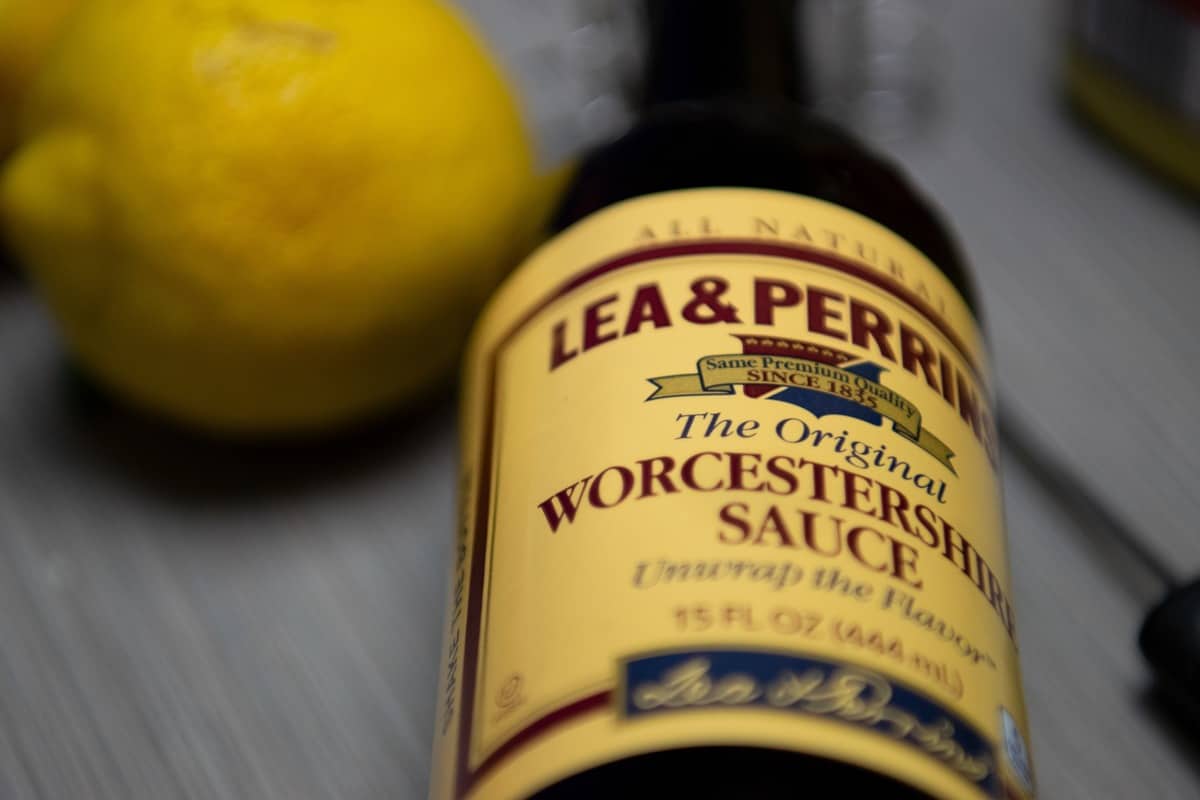
Soy Sauce + Hoisin Sauce
Soy sauce is a staple ingredient in many Asian dishes and has a salty, umami flavor. It's also made from fermented soybeans and often contains wheat and salt. While it won't give you the same depth of flavor as dark soy sauce, it can still add a savory note to your dish, so use this when there’s not much regular soy sauce already in your recipe.
Hoisin sauce, unlike dark soy sauce, is a thick, sweet, and savory sauce that's often used in Chinese cuisine. It's made from soybeans, sugar, vinegar, garlic, and various spices. While it's not a perfect substitute for dark soy sauce, it can add a similar depth of flavor and sweetness to your dish.
When using soy sauce or hoisin sauce as a substitute for dark soy sauce, bear in mind that they have different flavor profiles, so you may need to adjust the amount you use to get the desired taste.
Additionally, dark soy sauce is thicker and more syrupy than regular soy sauce, so you can add a bit of cornstarch or another thickener to achieve a similar consistency.
Soy Sauce + Balsamic Vinegar
Dark soy sauce is typically thicker and sweeter than regular soy sauce, so the balsamic vinegar helps to add some of that sweetness and depth of flavor. To make the substitute, combine equal parts soy sauce and balsamic vinegar, preferably a thicker balsamic.
Start with a small amount of this swap and taste as you go while slightly adjusting the ratios to your liking, and remember that balsamic vinegar is more acidic than dark soy sauce, so you may want to use a little less vinegar than soy sauce.
This combination can work well in many dishes that call for dark soy sauce, such as stir-fries, marinades, and dipping sauces. It won't be exactly the same as using dark soy sauce, but it can be a tasty and convenient alternative.
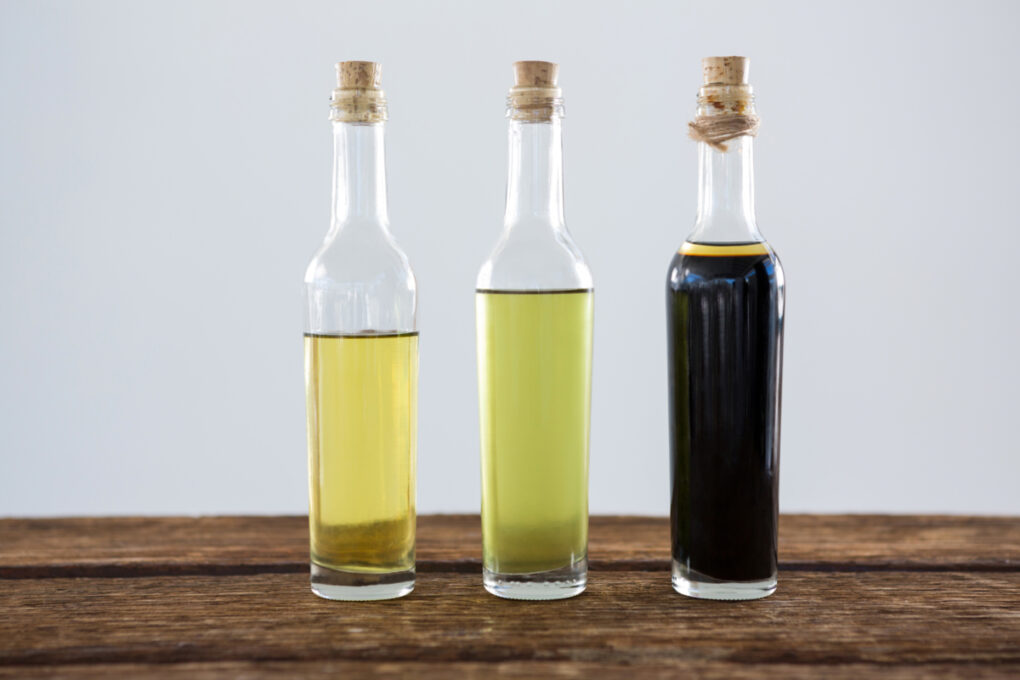
Teriyaki Sauce
Teriyaki sauce is a Japanese sauce that is made with soy sauce, sugar, and mirin, which is a sweet rice wine. The sauce has a similar dark color and rich umami flavor to dark soy sauce but with a sweeter taste due to the added sugar.
The Japanese flavor enhancer also has a slightly thicker consistency than regular soy sauce, which can make it a great marinade for meats or a dipping sauce for dumplings or sushi.
Take into consideration that teriyaki sauce may not be as salty as dark soy sauce, in which case you may need to adjust the amount of salt or soy sauce in your recipe accordingly, but it can be q quick & easy swap for most recipes.
Oyster Sauce
Oyster sauce is a thick, brown sauce made from oysters, soy sauce, sugar, and other seasonings. Packed with a rich and savory flavor that is similar to dark soy sauce, but with a slightly sweeter taste.
Because of its thickness, the oyster sauce can also add a nice depth and texture to dishes that dark soy sauce might not be able to achieve. Just be aware that oyster sauce does contain shellfish, so it may not be suitable for those with allergies or dietary restrictions.
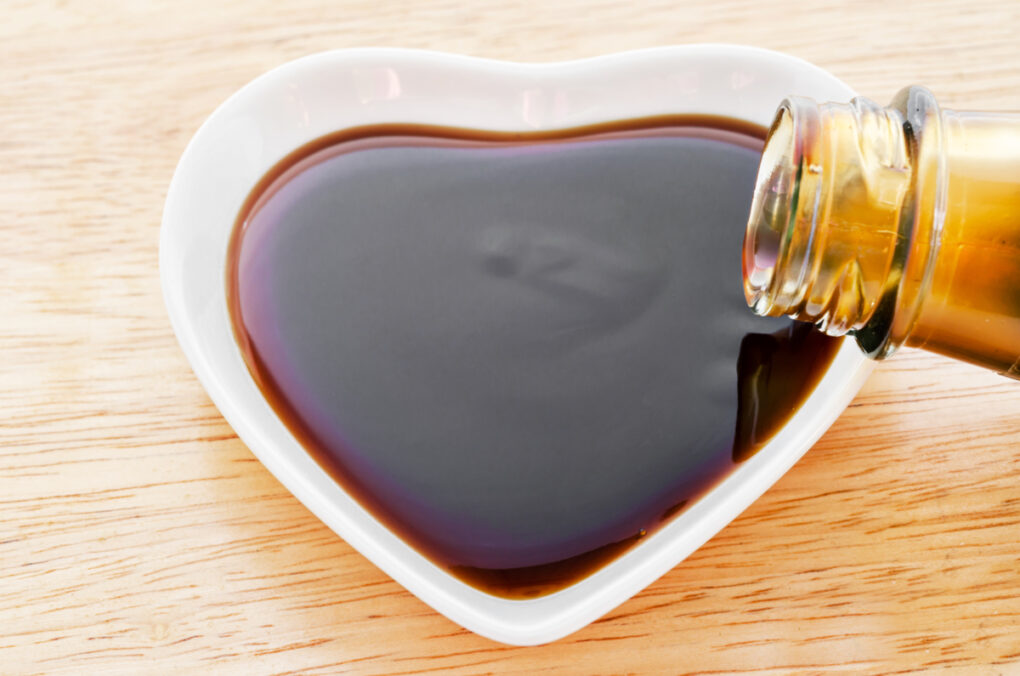
Soy Sauce + Molasses
A blend of soy sauce and molasses is also an option to consider if you don't have any dark soy sauce on hand or if you're looking for a slightly sweeter flavor profile. To make this substitution, you'll want to start by mixing together equal parts soy sauce and molasses.
You can adjust the ratio to your liking, depending on how sweet you want the final product to be. The soy sauce will provide that salty umami flavor that you're used to getting from dark soy sauce, while the molasses will add a touch of sweetness and depth.
Together, they create a flavor that's similar to dark soy sauce, but with a little extra complexity. Try a 2:1 soy sauce to molasses ratio for a more savory blend. Just one more thing to consider is that this substitution will change the color of your dish.
Dark soy sauce is, well, dark, whereas the soy sauce/molasses combo will be much lighter in color. So, if you're making something where the color is important, you might want to stick with regular soy sauce or try a different substitution.





Comments
No Comments